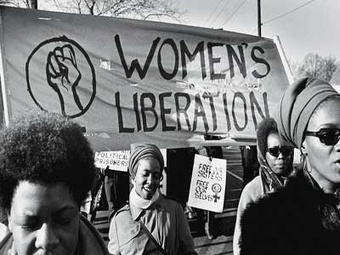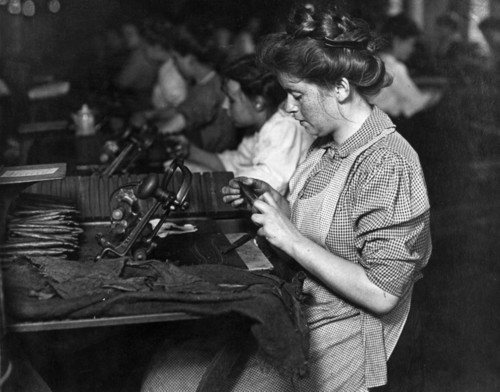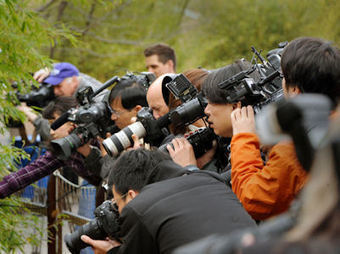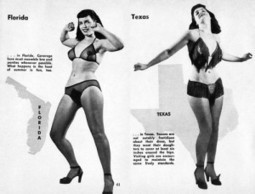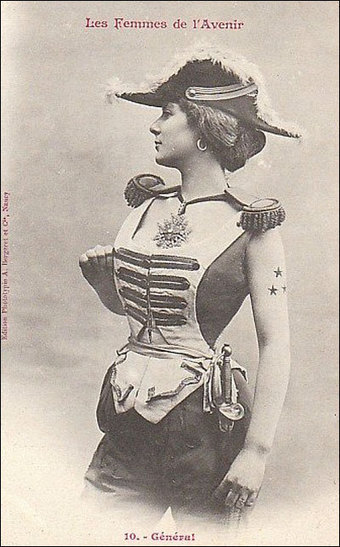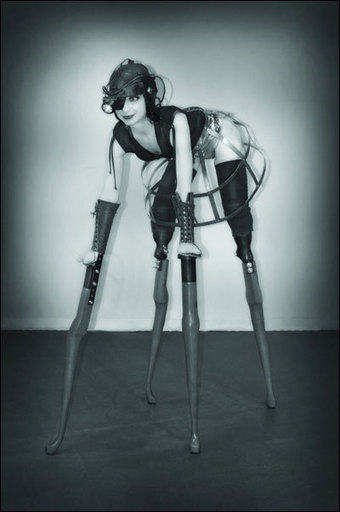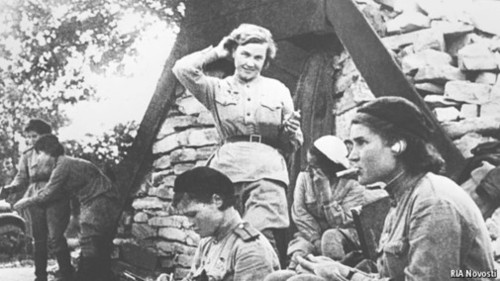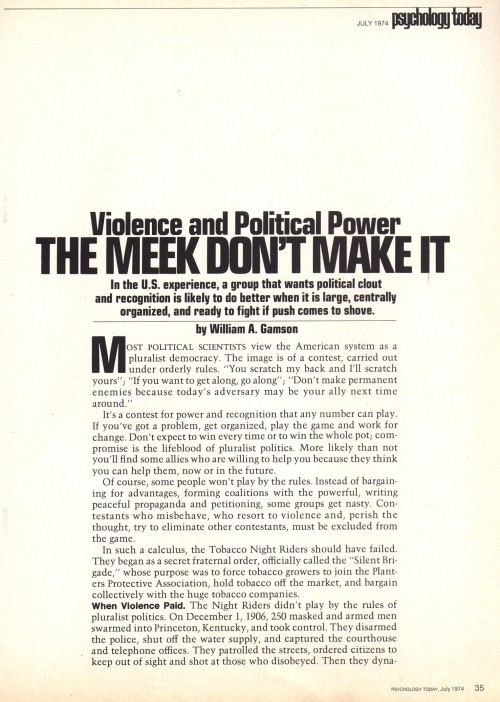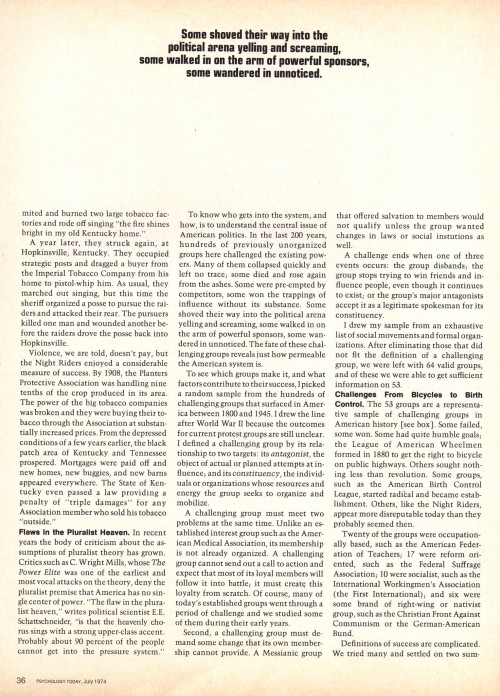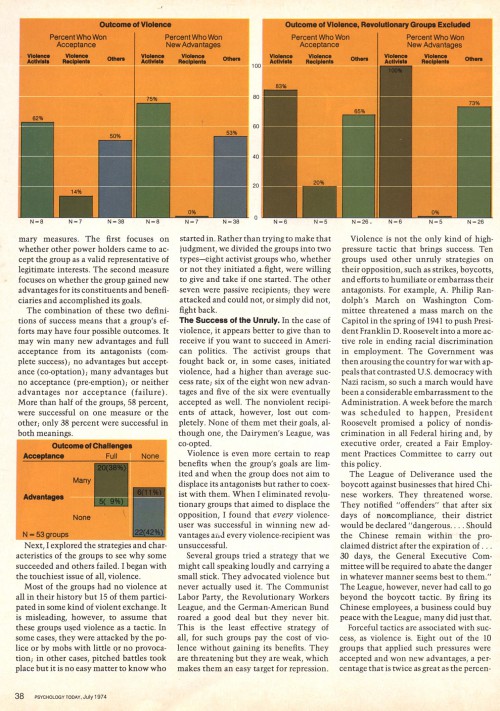Last week the delightful Vicky Beeching tweeted something about receiving abuse for having the audacity to advocate a feminist theological stance. His Grace pitched in, asking: “Who are these infallible zealots declaring that one may not be both feminist and Christian? Do they have idea of the meaning of either term?” This brought further censure and derision upon his own head. Perhaps a little clarification is required…
Category: Herstory News & Views
Hypocrisy, Hate and Harm #no2h8splc
[This] is what happened when a bunch of RadFems righteously took over the offices of the Ladie’s Home Journal because it was a vector for promoting false stereotypes about women. Protesting negative stereotypes of cisgender women in the media has a long and proud tradition among feminists.
See on www.transadvocate.com
Sen. Elizabeth Warren: Reproductive rights isn’t just a women’s issue
Republican’s attempt to repeal the Affordable Care Act is part of their assault on reproductive rights, according to Senator Elizabeth Warren (D-MA).
Speaking at Planned Parenthood’s Organizing and Policy Summit this month, Warren said access to health care and family planning services was not just a women’s issue.
“Certainly it is a women’s issue, but it’s a family issue,” she explained. “It effects everyone in the family. We have healthier families because of the things we fight for here at Planned Parenthood.”
See on www.rawstory.com
HelloFlo offers tampon subscriptions and educational materials aimed at teens
Most women need one product every single month. A startup is trying to convert that need into a subscription-based offering for tampons.
See on www.thedailybeast.com
In Lilli Vincenz’s papers, a trove of gay rights history
History is written by the victors, but also by the scrapbookers, the collectors, the keepers, the pack rats. By those who show up, at the beginnings of things and with the right technology. History sometimes comes in pieces. It needs to be reassembled. Pasted and coaxed. Sometimes the finished product still has holes.
In one corner of the climate-controlled manuscript division, on a series of otherwise empty shelves, sits Lilli Vincenz’s unprocessed collection. …
Twelve boxes. Cream-colored. Heavy. Inside: meticulous fragments of the gay rights movement of the latter half of the 20th century. Political pamphlets, sociological surveys, photographs and obituaries. Diaries of a young woman who was nervous about going into her first gay bar but whose Arlington living room later became the default place for gay women to feel at home.
See on www.washingtonpost.com
4 Women’s Issues That Haven’t Changed Since 1911
Over 100 years ago, radical writer and activist Emma Goldman penned the essay “The Tragedy of Woman’s Emancipation.” In the piece, which the Atlantic unearthed on July 12th, Goldman explores issues of equal pay, the tension between family life and…
See on www.huffingtonpost.com
Is “feminism” a dirty word in PR? – Inside PR – PRmoment
As PR is female-dominated you would expect there to be sexual equality, yet some claim sexism still exists. We discuss whether “feminism” is a dirty word in PR (RT @therealprmoment: Is “feminism” a dirty word in PR?
See on www.prmoment.com
From Bloomers to G-Strings: A History of Burlesque Underwear
As a burlesque performer or even an enthusiast you may have seen the old photos of Bettie Page in the “Guide for Strip-Teasers.” It was published in 1953 as a guide to show how much a stripper could reveal depending on what US. State she was in. Burlesque has changed a lot since 1953, most especially the underwear! Let’s take a journey through the ages from the beginnings of burlesque onwards, as a whole, to see how the last few layers of a showgirls costume have changed.
See on www.burlesquehall.com
Women of the Future, 1902
Generals, marines, lawyers, coach drivers, politicians, and even artists! These were “Les Femmes de l’Avenir,” or “Women of the Future,” as imagined in a series of 20 postcards from the turn of the last century.
See on coilhouse.net
Lisa Bufano: Dancer/Shapeshifter
“I’m a shapeshifter… I explore the different forms my body can take using different mediums.” – Lisa Bufano. Photo by Gerhard Aba.
Lisa Bufano is a performance artist whose work incorporates elements of doll-making, animation, and dance. Bufano was a competitive gymnast as a child and a go-go dancer in college before she lost her lower legs and all her fingers due to a staphylococcus bacterial infection at the age of 21. Shortly after this occurred, Bufano went on to study stop-motion animation and sculpture at the School of the Museum of Fine Arts in Boston.
See on coilhouse.net
Gloria Steinem – Pop Art Protests
As one of the leading American feminists since the early 1960s Gloria Steinem has had a long, varied and controversial career as a writer and political activist that has seen her employed as an ‘undercover’ Playboy bunny, lobby as a pro-abortion…
See on www.voicesofeastanglia.com
Sonia Delaunay : Textile Artist
When reading about the history of fiber art it seems to take on many elements. The history of fiber art incorporates craft, textile and design elements that are not usually explored in regular art history. The use of embroidery and clothing inspired artists such as Sonia Delaunay who had started off as a painter and found new inspirations when she shifted her medium from brush, canvas and oil paint to needle, thread and textile printing. In exploring Sonia’s textile and wearable art works I’d like to explore her success as a woman in the art world.
Volumnia Cytheris
Cytheris was born a slave in the latter days of the Roman Republic, about 70 BCE. Her parents were probably Greek, and her name (deriving from Cytherea, one of Aphrodite’s bynames) may not be the one she was originally assigned at birth, but rather one she adopted (or was given) later when it became clear what her profession would be. She was the property of the wealthy and ambitious Publius Volumnius Eutrapelus, an enthusiastic patron of the theater, who had her trained as a mime and introduced her to the theater in her early teens. Roman mime was not the silent niche-art it is today, but rather a blend of singing, dancing and acting, much of it improvised; it is therefore more closely akin to vaudeville than to Mummenschanz or Marceau. As I mentioned in “Meretrices and Prostibulae”, most mimes – like most actresses for centuries before and millennia after – were also prostitutes, and Cytheris was probably in the group of mimes who in 55 BCE began the tradition of ending the Floralia with a striptease (the public sex was not added until imperial times).
See on maggiemcneill.wordpress.com
Suzy Favor Hamilton Shouldn’t Be Shamed For Turning to Sex Work
In 1983, the Big Ten Conference established a women’s Athlete of the Year award and later named it after Suzy Favor Hamilton, a University of Wisconsin middle distance runner and alumna who followed her illustrious college career with three appearances in the Olympic Games. She was more than qualified to have her name attached to such a prestigious award. Unfortunately, the conference announced on Tuesday that her name would be removed from the award after it was revealed in December that Favor Hamilton had worked as an escort since 2011.
“I do not expect people to understand,” she wrote on Twitter, “but the reasons for doing this made sense to me at the time and were very much related to depression.” She added that her husband knew about her work and didn’t approve of it.
But something that the Big Ten needs to realize — along with the rest of the country — is that sex work is one of the most stigmatized professions in the world.
See on www.policymic.com
Margaret Cho’s Laughing Orgasms
This is kind of fun: in the most recent installment of Hysterical Literature, Margaret Cho keeps breaking out in squirming giggles and laughter as she orgasms — and eventually drops her Kindle — while reading aloud at the table…
See on www.erosblog.com
Nadezhda (Nadia) Popova, night bomber pilot, died on July 8th, aged 91
WHEN their hair was chopped off—as it had to be when they joined one of the Soviet Union’s three women-only air-force regiments—some of the women looked just like boys. Add in the bulky flight jackets, the too-big trousers and the size 42 boots, all made for men, and they could have passed for male pilots, just about. Not Nadia Popova. Somehow she managed, with a cinched waist here and a few darts there, to look like a Hollywood star. Between sorties she would fluff her hair, pressed flat by her leather flying helmet, in her tortoiseshell mirror (as at the centre of the picture above). Before each flight she would pin to her uniform a beetle brooch, which also served as a lucky charm. Beside her wooden cot in whatever shed they were sleeping in—once a cowshed—she kept a white silk blouse and a long blue silk scarf, in case she had to make a really feminine impression.
This was also the young woman—she was 19 or 20 then—who could turn her aircraft over and dive full-throttle through raking German searchlights, swerving and dancing, acting as a decoy for a second plane that would glide in silently behind her to drop its payload of bombs. That done, the second plane would act as decoy while she glided in to drop bombs herself. She made 852 such sorties in the second world war as a pilot in the 588th Night Bomber Regiment, later named the 46th Guards in honour of its courage.
See on www.economist.com
Sarah Good: Accused Witch | History of Massachusetts
Sarah Good was one of the first women to be accused of witchcraft during the Salem Witch Trials of 1692. A homeless, and pregnant, beggar who would often wander door to door asking for handouts while her husband worked as a day laborer, Good was a prime target for the accusation of witchcraft in the small Puritan-run town where nonconformity was frowned upon.
See on historyofmassachusetts.org
Meet Rosa DeLauro, the ‘Hipster’ Congresswoman With a Feminist Agenda – New York Magazine
Meet Rosa DeLauro, the ‘Hipster’ Congresswoman With a Feminist Agenda New York Magazine In the wake of the War on Women, the congresswomen hope to “rebrand” evergreen labor issues such as paycheck fairness, the minimum wage, paid sick leave, and…
See on nymag.com
HOLAAfrica! – blackinasia: “We should all be feminists”…
blackinasia: “ “We should all be feminists” TedxTalk by Chimamanda Ngozi Adichie This talk is honestly just incredible. As a Nigerian and a fellow Igbo as well, it is beyond moving to see someone like…
See on holaafrica.tumblr.com
Herstory at Facebook
History, politics & culture as this woman sees it. The serious, the kitsch, the opinionated.
A place to connect with Herstory at Facebook.
See on www.facebook.com
Transgender women of Paris in the Fifties and Sixties
These beautiful photographs of transgender women, in Paris from the late 1950s and early 1960s were taken by Swedish photographer Christer Strömholm, who traveled to Paris in the late-fifties, where he hoped to create a new kind of night-life…
See on dangerousminds.net
“The Meek Do Not Inherit The Earth – Or At Least The Part Of It Presided Over By The American Political System”
Buried inside the July 1974 issue of Psychology Today, an article which sheds some light on political movements in the United States. In Violence and Political Power: The Meek Don’t Make It (pages 35-41), William A. Gamson analyzes and discusses just what really affects changes in American politics.
Some of the article is Activism 101, but still worth mentioning.
…a challenging group must demand some change that its own membership cannot provide. A Messianic group that offered salvation to members would not qualify unless the group wanted changes in laws or social institutions as well.
I keep re-reading this article in the context of “What happened to feminism?” If you believe there’s a problem with the feminist movement, and with related issues of sexual autonomy and sexual rights, it might lie in several key places. Is it too fragmented? Unclear in it’s goals? What will history show us?
What seems unlikely, even unlikable, is the fact that violence works.
The activist groups that fought back or, in some cases, initiated violence, had a higher than average success rate; six of the eight won new advantages and five of the six were eventually accepted as well. The nonviolent recipients of attack, however, lost out completely. None of them met their goals, although one, the Dairymen’s League, was co-opted.
Violence is even more certain to reap benefits when the group’s goals are limited and when the group does not aim to displace its antagonists but rather to coexist with them. When I eliminated revolutionary groups that aimed to displace the opposition, I found that every violence-user was successful in winning new advantages and every violence-recipient was unsuccessful.
Gamson clearly states that violence is “the spice of the protest, not the meat and potatoes” but it’s amazing how effective it is. When you read that in terms of the abortion issue today, it is too clearly true. I’m not advocating bombing back; but it certainly is frightening how effective Pro-Life violence has been.
He suggests other unruly acts with which Pro-Choice groups might fight back:
Violence is not the only kind of high-pressure tactic that brings success. Ten groups used other unruly strategies on their opposition, such as strikes, boycotts, and efforts to humiliate or embarrass their antagonists.
The parting words:
Challengers who try to play by the rules that members observe among themselves should realize two things. Insiders won’t apply their rules to outsiders, and outsiders, being poor in resources, have little to offer the powerful in an alliance.
Challengers do better when they realize that they are in a political combat situation. They don’t need to look for a fight, but they had better be ready to participate in one if the occasion arises. They must therefore be organized like a combat group — with willing, committed people who know what to do, and a command structure that can keep its people out of the wrong fight at the wrong time.
But this advice really only applies to groups with limited goals. I included revolutionary groups in my sample but it should come as no surprise that none of them were successful. I can’t say what makes for success among such groups since I had no successes to compare with the failures. A more complete picture of the successful group is one that is ready and willing to fight like hell for goals that can be met without overturning the system.
Perhaps it is disconcerting to discover that the meek do not inherit the earth — or at least that part of it presided over by the American political system. But those rambunctious groups that fight their way into the political arena escape misfortune because they are prepared to withstand counterattack, and to make it costly to those who would keep them out.

